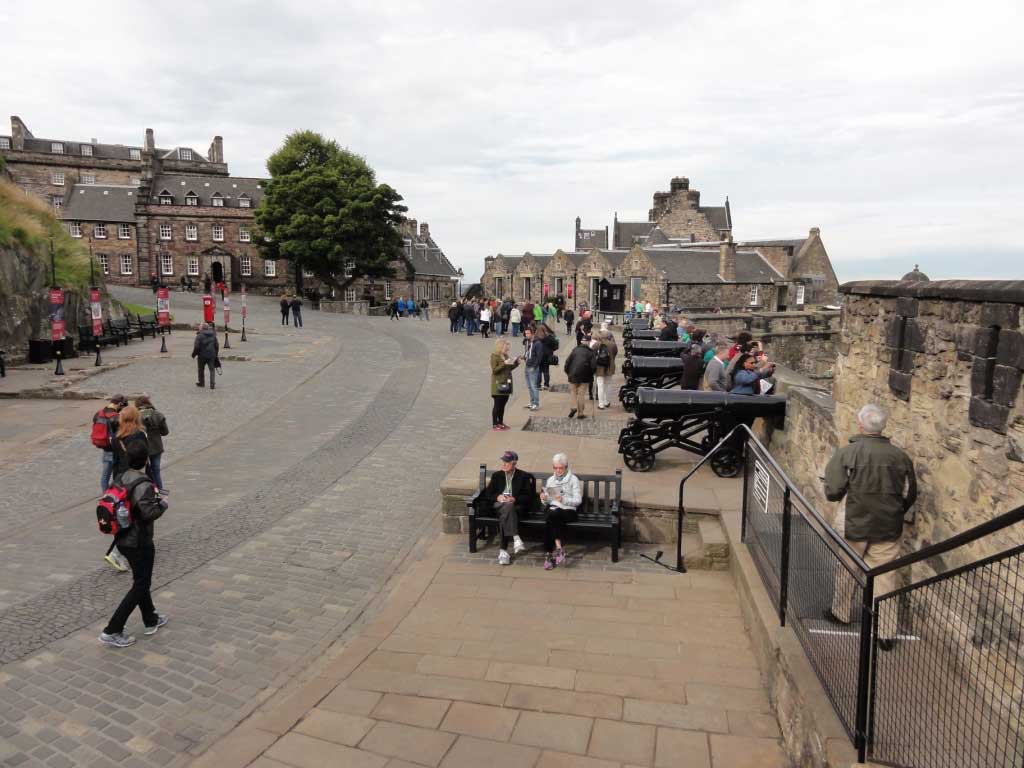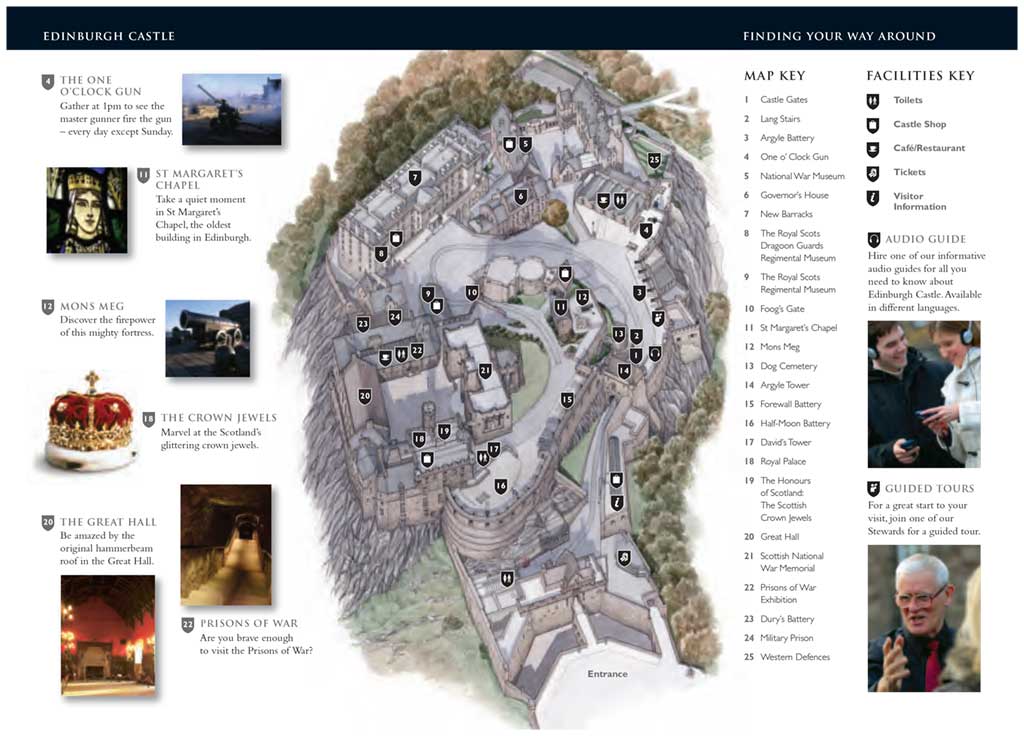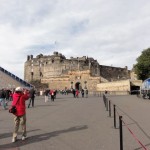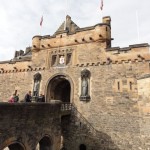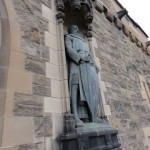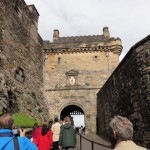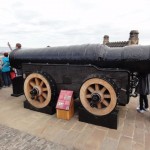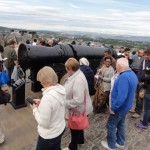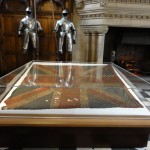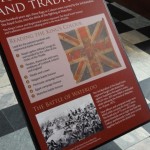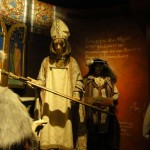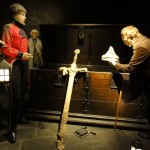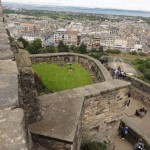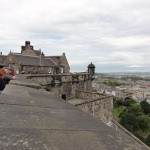Edinburgh Castle: Day 2
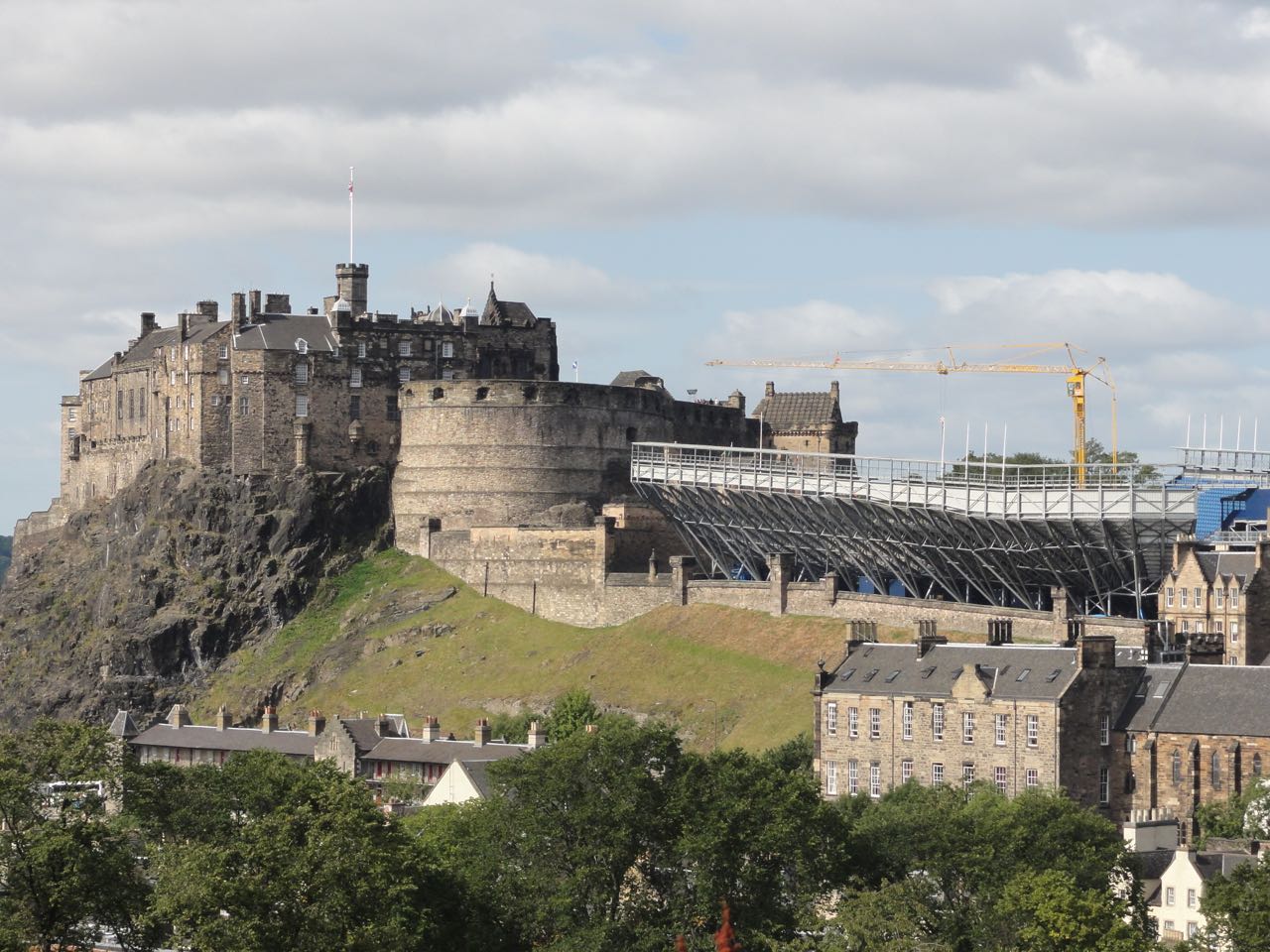
Sorry about the shaky camera work above, but I wanted to show what an impression the Great Hall left on me.
Edinburgh Castle lies at the western end of the Royal Mile, atop Castle Rock with a good command of the city. It’s not too steep of a climb but despite a good night’s sleep, I was still tired. Fortunately we walked slowly because there were many opportunities to take pictures, mostly of things I suspected we’d never get around to visiting, like John Knox’s House, the Museum of Edinburgh and sadly the Mary King’s Close exhibit. We got to the castle about 10 a.m. after passing through the temporary stands in which the military tattoo is held in August. Cranes were busy dismantling the stands and still had a long way to go. It’s a rather elaborate structure for an event that lasts only a few weeks.
We showed our preprinted tickets, Jim’s stamped Concession (meaning senior citizen; they start at age 60) and £3.30 cheaper. We hadn’t paid for the audio guide and instead attached ourselves to one of the regular tour groups. The woman steward who gave the tour offered a quick history, took us round the important sites, told us where to find restrooms, made the same joke she’s made hundreds of times (about Scots being cheapWhy a one o’clock gun and not a noon gun? Because Scots are too cheap to waste another 11 shells.) but still got a good laugh, and gave us a very good time saving tip that we wished we’d followed. At least we told the tip to Lee and Jim.
Visiting the castle is not unlike touring the Tower of London, just on a slightly smaller scale. If you’re standing at the Argyle Battery and looking around, you’d think you were inside a small town, just like standing in Tower Green in London. It’s not until you look out over the walls and see the commanding view that you’re reminded that you’re on a hill (one of the seven hills that define Edinburgh’s topography) and that this was a formidable fortress.
Once inside, you could spend the entire day if you’re really fond of museums, because you’ll find the National War Museum and the Royal Scots Dragoon Guards Regimental Museum. There’s also the Scottish National War Memorial, finished in 1927 to honor Scottish forces who died in World War I. It’s an incredibly moving memorial because you get the sense that when they first contemplated building it they really thought it was the war to end all wars, that no one would ever consider such insanity again. There are inscriptions honoring every regiment, corps and theatre involved in the war and there’s a vault with the names of the dead, added to after World War II and there are additional rolls for every conflict since. The plaques and reliefs crowd the walls and it seems every sacrifice is remembered, from the tank corps and the royal flying corps to the nurses and even a little plaque honoring The Tunnellers’ Friends, the canaries and mice sappers kept to alert them of dangerous gases.
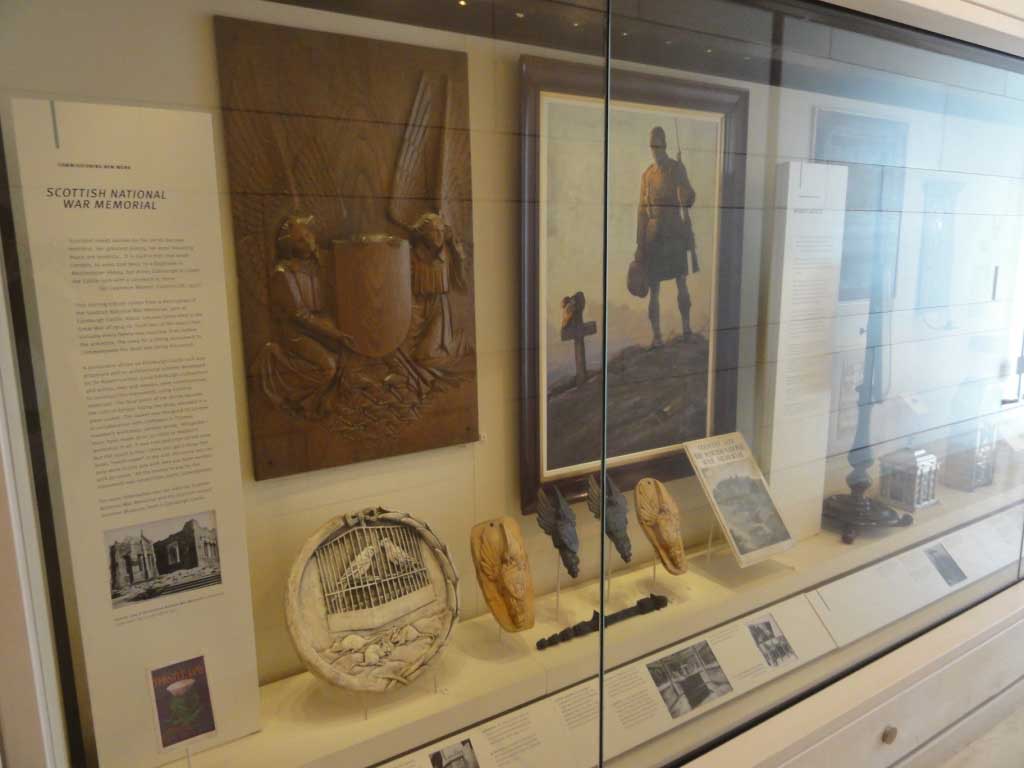
Understandably you’re not allowed to take pictures inside the memorial, but during our time in Edinburgh we saw copies or patterns of many of the plaques and friezes that adorn the memorial at the National War Museum (inside the castle) and at the Museum of Scotland.
Stupidly we missed one of the highlights of any visit to the castle, the firing of the one o’clock gun. I blame it on our jet lag, but we were inside the Red Coat Cafe when the gun was fired and we never noticed it, despite the impressive bang you’ll hear in the video above. The tradition began in 1861 to serve as a time signal to ships in the Firth of Forth and is coordinated with the dropping of the time ball atop the Nelson Monument on Calton Hill.
The next day I made sure when we were on the roof garden at the Museum of Scotland to film the time ball and record the sound of the gun. However the ball never dropped and the sound of the gun was an unimpressive distant cough not picked up by the camera. Admittedly the gun was aimed toward the Forth.

The Royal Palace and the Great Hall were satisfying for different reasons, large and small. Laich Hall is rather grand with the coat of arms of James I of England (James VI of Scotland) over the fireplace and a decoration running along the top with the names of all the kings of Scotland, but right off the hall is the tiny room where Mary Queen of Scots gave birth to James I. I had that tiny room in mind the next day at Holyrood Palace when I saw the spot where her Italian secretary was murdered and the equally tiny room where the queen had been dining before the deed was done.
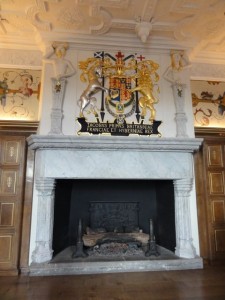
From there we toured the Great Hall, which is again grand and monumental with its hammered beam ceilings, wood paneling and majestic painting, The Fight for the Standard, which shows a Scots Grey cavalryman capturing a French eagle during the Battle of Waterloo. The high theater of the hall is in contrast to the palace because the Victorians remodeled the hall in the Gothic style they loved. We were also very fortunate to see the Colours of the 3rd Battalion, Royal Scots, before they are packed away. They’re too fragile to display except during this 200th anniversary year of the Battle of Waterloo, when and where these flags flew.
The National War Museum occupied us at least an hour and that was only by rushing headlong. Unfortunately it was too dark in the museum to get good pictures. I was really moved by the display case celebrating Major General Sir Hector Archibald MacDonald or Fighting Mac as he was known. He rose from private and distinguished himself at Omdurman and during the Second Boer War, but his posting to Ceylon landed him in trouble after allegations of homosexual activity with local boys. He shot himself rather than face a court martial. Heroes are complicated figures.
Another favorite for me was the cemetery for the dogs (usually regimental mascots) of soldiers stationed at the castle since 1840. It’s a sweet note among more gruesome offerings like the Black Dinner and the prisons that held among others Americans captured during our Revolution. The tiny St. Margaret’s Chapel was also nice but hard to appreciate with all the tourists jammed inside. Our steward tour guide said it’s a popular wedding venue for fathers of the bride because it can only seat 20 people.
I’ll cover the rest of Day 2—New Town and Calton Hill, in a separate post.

